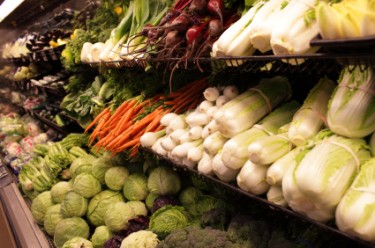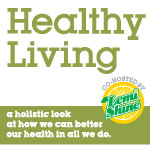
In this week’s LA Times, a headline scrame “42% of American adults will be obese by 2030.” It’s more than enough to make you pause. Our kids, who are currently under our roofs, will be part of this epidemic. A five-year old will be just hitting 21 when almost half of his/her peers will be obese. Wow.
 There are a multitude of ways we know we can help our kids eating healthier – cut out junk food, cut down on sweets, exercise and eating at home – are all ways we’ve told our kids they can be healthy. But really, this isn’t enough. So many of the marketed “healthier foods” have unhealthy parts to them like low sugar items, for example. And many, many more have dangerous chemicals in them that have many known side effects and shouldn’t be in our foods but are due to political lobbying and lack of regulation.
There are a multitude of ways we know we can help our kids eating healthier – cut out junk food, cut down on sweets, exercise and eating at home – are all ways we’ve told our kids they can be healthy. But really, this isn’t enough. So many of the marketed “healthier foods” have unhealthy parts to them like low sugar items, for example. And many, many more have dangerous chemicals in them that have many known side effects and shouldn’t be in our foods but are due to political lobbying and lack of regulation.
But let’s bring it back to some easy ways you can take care to teach your children about eating healthy. Here are some of the ways in which I have addresses it with my children:
– Only buy organic if possible. If organic isn’t available, then I look to kosher foods since they have higher standards for being classified as such than regular food.
– Portion control. A portion size is the size of the palm of your hand. That goes for your children too. Their portions are not that same as our portions.
– Talk about sometimes foods and healthy, body-energizing foods. It helps a lot to talk to your kids about why you eat meat (it’s protein) and veggies (for the vitamins). Talk about what these do for your body and how you can’t just take a pill to replicate it (think of daily vitamins).
 – Only buy what you want your family to eat and let them choose snacks. I don’t bring or buy snacks that are junk food into my house. They don’t see me eating it and when they see others eating it they know it’s not good for them so they don’t long for it.
– Only buy what you want your family to eat and let them choose snacks. I don’t bring or buy snacks that are junk food into my house. They don’t see me eating it and when they see others eating it they know it’s not good for them so they don’t long for it.
– My friends get to eat it, why do I? My favorite parent philosophy is “different parents, different rules.” It is a good lesson for them to learn that everyone isn’t the same and that no one person can make the best decisions for another. It is important for children to think through what they are asking for and understand themselves why it isn’t a good idea to partake in the activity/eat the food/etc.
– Teach them, the closer it is to what it looks like coming from the Earth, the better it is for your body. This is quite easy for them to get: apples look like apples from the trees, oats look like oats when harvested, water looks like water, raw honey looks like a honeycomb, etc.
– Shop the outside of the grocery store. This is where the freshest items come from and most definitely it should make up the majority of your grocery cart/bill each week. If you must get some items from the middle of the store, look for items with five or less ingredients and with ingredient names you can read.
– Sign up for a local CSA to get your fruits and veggies local and fresh. It also means getting new veggies/fruits to experiment with in the kitchen.
I am also constantly learning. Here are some great tips for baking healthier with alternative ingredients from Emily Rose, author of Have Your Cake:
– Butter is high in saturated fats. As an alternative Emily uses rice bran oil, which is a lot lower in saturated fats and free of trans fat.
– As a replacement for refined sugar, which plays a role in obesity and tooth decay, Emily uses raw honey, a natural sweetener. Her recipes require considerably less amounts of honey to achieve the same sweetness as refined sugar. In addition, raw honey is an unprocessed source of beneficial nutrients.
– Using whole-wheat flour instead of white flour provides a higher concentration of fiber and the same great flavor and texture as what you would get with white flour.
Constantly be on the lookout for more great cooking tips and tricks that cut down on the processed, chemically-treated foods you can find in many home pantries and cabinets.
Green Parenting is published every Friday.
Email questions and ideas to elise@mommybites.com.



